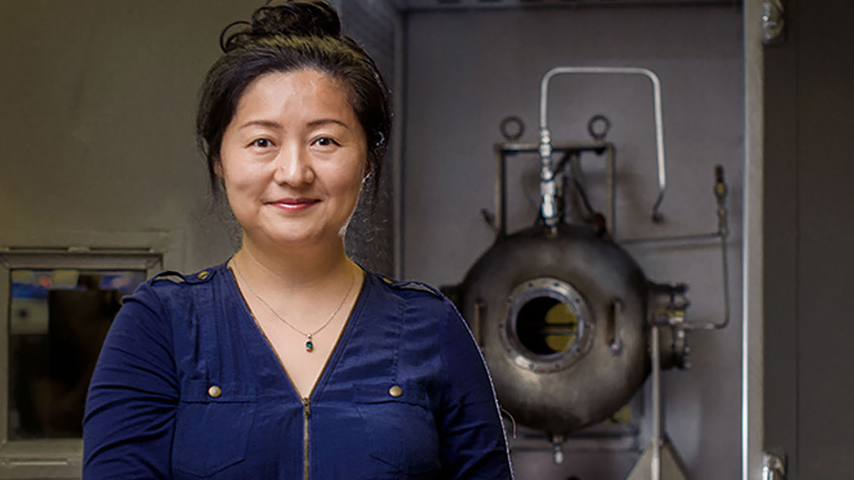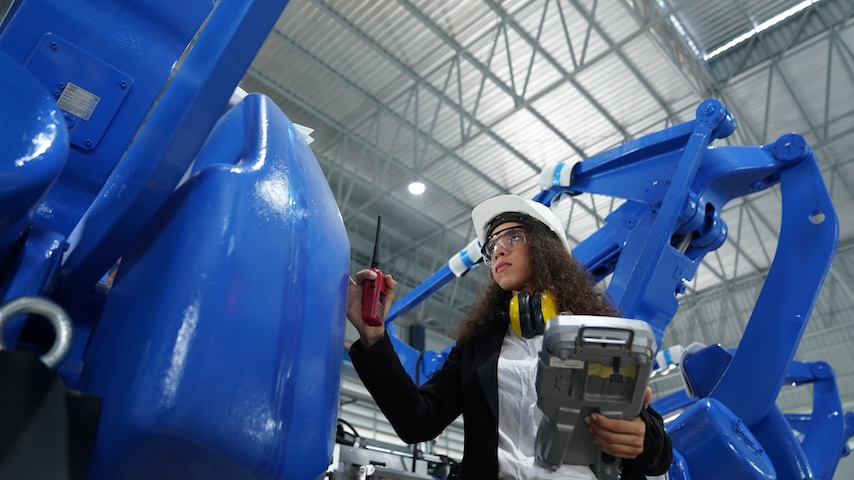Reaching Back to Move Detonation Forward
Reaching Back to Move Detonation Forward


Purdue University researchers look toward a 100-year-old patent for a valve free of moving parts that may finally make the rotating detonation engine possible and rockets faster and more efficient.
There are moving parts in the valves of engines, plumbing systems, and even in human hearts. But more than 100 years ago, Nikola Tesla invented what has come to be called the Tesla Valve. This valve is essentially a looping tube that sends any fluid trying to go in the wrong direction back against itself. The only thing that moves is the fluid. This eponymous valve may soon be used to make our rockets faster and more efficient.
Rocket engines, as we know them, ignite gasses, and expel them to send our payloads where we want them. It’s a refined and efficient process, but one that merely deflagrates: Propulsion is achieved when gasses ignite, expand, and are sent out of the exit nozzle. Change the deflagration to detonation—where the gasses explode at supersonic speeds—and the efficiency and power of the engine skyrocket.
Researchers all over the world are trying to make the phenomenon a flyable reality. When fuel is burned in a near instant and at high temperatures (2,200 °F), thrust can only occur in bursts when the fuel and oxidizers are sent down a simple hollow tube. To make more powerful propulsion, rocket scientists have turned to the rotating detonation engine, or RDE, where the flame front travels in a circular path around a cylinder.
The loop-de-loop allows additional detonations to come right behind it, continuously, with two or more flame waves simultaneously wrapping around the cylinder.
There’s just one problem. The heat and supersonic speed of the moving detonation create an enormous pressure wave. In a traditional rocket, that wouldn’t be a problem, as the pressure behind the wave is lower than the upstream pressure. But a rotating detonation pushes the flow backward. And in an extreme environment like a detonation engine, the various valves we use today wouldn’t hold up or operate fast enough.
Become a member: How to Join ASME
“Which means you’re not able to supply a constant flow of fuel and oxidizer,” said Li Qiao, a professor of aeronautics and astronautics at Purdue University. “And that means you’re not going to be able to stabilize the detonation flame inside the combustor.” And the rocket would lose power instantly.
So, Qiao turned to the Tesla Valve. Having been around since 1920, U.S. patent 1329559 has found a few applications here and there, mostly in microfluidics. Qiao was reviewing ins and outs with RDE with her graduate students when the idea came up to use the centenarian valve, and soon they were testing it in simulation.
“That’s sort of the beauty of collective intellectual power in the research group,” she said. “I tell my graduate students to always be actively engaged in these kinds of discussions and not just sit in your cubicle, alone. Because when people meet together to exchange ideas, they always come up with something exciting.”
More for you: Spotlight on NASA Spaceflights
In their RDE computer model, they tweaked the curvature and diameter of the valve’s tubes, eventually coming up with an architecture that completely prevented a reverse flow from shutting down the engine. “Using this type of design, you can prevent the reverse flow from the injection in the injection manifold and then can basically maintain the detonation wave and therefore provide constant thrust.”
Qiao and her team created three different designs for three different potential RDE engines. But, as of now, they all live and operate in simulation only—no RDE has yet flown in an actual rocket. Qiao is hoping to partner with an RDE designer to move their valve from the virtual world to the actual. “We would be very happy if industry would like to collaborate with us to use our design to test in their engines to move the technology to the next level,” she said. “Maybe in 10 years it will become mature, and we will actually see products with flying rotating detonation engines.”
Michael Abrams is a technology writer in Westfield, N.J.
Rocket engines, as we know them, ignite gasses, and expel them to send our payloads where we want them. It’s a refined and efficient process, but one that merely deflagrates: Propulsion is achieved when gasses ignite, expand, and are sent out of the exit nozzle. Change the deflagration to detonation—where the gasses explode at supersonic speeds—and the efficiency and power of the engine skyrocket.
Airworthy reality
Researchers all over the world are trying to make the phenomenon a flyable reality. When fuel is burned in a near instant and at high temperatures (2,200 °F), thrust can only occur in bursts when the fuel and oxidizers are sent down a simple hollow tube. To make more powerful propulsion, rocket scientists have turned to the rotating detonation engine, or RDE, where the flame front travels in a circular path around a cylinder.
The loop-de-loop allows additional detonations to come right behind it, continuously, with two or more flame waves simultaneously wrapping around the cylinder.
There’s just one problem. The heat and supersonic speed of the moving detonation create an enormous pressure wave. In a traditional rocket, that wouldn’t be a problem, as the pressure behind the wave is lower than the upstream pressure. But a rotating detonation pushes the flow backward. And in an extreme environment like a detonation engine, the various valves we use today wouldn’t hold up or operate fast enough.
Become a member: How to Join ASME
“Which means you’re not able to supply a constant flow of fuel and oxidizer,” said Li Qiao, a professor of aeronautics and astronautics at Purdue University. “And that means you’re not going to be able to stabilize the detonation flame inside the combustor.” And the rocket would lose power instantly.
Turn to Tesla
So, Qiao turned to the Tesla Valve. Having been around since 1920, U.S. patent 1329559 has found a few applications here and there, mostly in microfluidics. Qiao was reviewing ins and outs with RDE with her graduate students when the idea came up to use the centenarian valve, and soon they were testing it in simulation.
“That’s sort of the beauty of collective intellectual power in the research group,” she said. “I tell my graduate students to always be actively engaged in these kinds of discussions and not just sit in your cubicle, alone. Because when people meet together to exchange ideas, they always come up with something exciting.”
More for you: Spotlight on NASA Spaceflights
In their RDE computer model, they tweaked the curvature and diameter of the valve’s tubes, eventually coming up with an architecture that completely prevented a reverse flow from shutting down the engine. “Using this type of design, you can prevent the reverse flow from the injection in the injection manifold and then can basically maintain the detonation wave and therefore provide constant thrust.”
Qiao and her team created three different designs for three different potential RDE engines. But, as of now, they all live and operate in simulation only—no RDE has yet flown in an actual rocket. Qiao is hoping to partner with an RDE designer to move their valve from the virtual world to the actual. “We would be very happy if industry would like to collaborate with us to use our design to test in their engines to move the technology to the next level,” she said. “Maybe in 10 years it will become mature, and we will actually see products with flying rotating detonation engines.”
Michael Abrams is a technology writer in Westfield, N.J.






